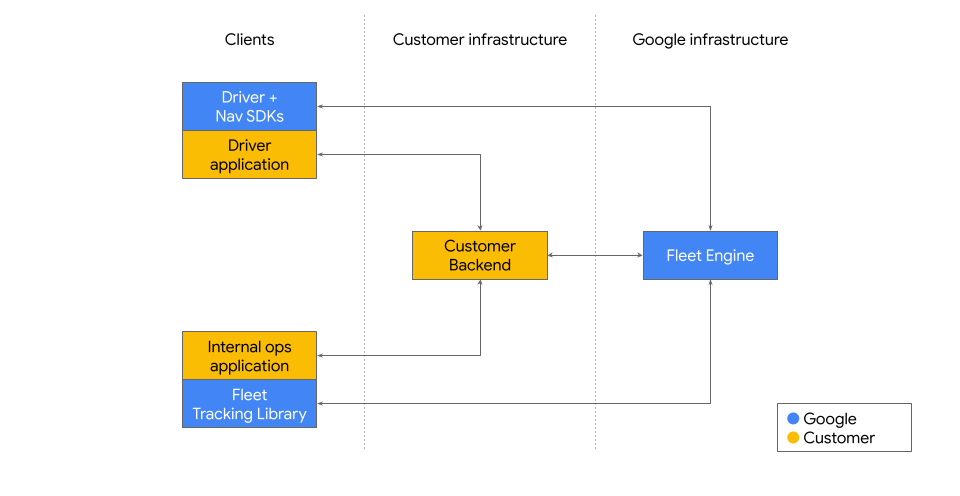The JavaScript Fleet Tracking Library lets you visualize the locations of
vehicles in your fleets in near real time. The library uses the
On Demand Rides and Deliveries API
to allow visualization of vehicles as well as trips. The JavaScript Fleet
Tracking Library contains a JavaScript map component that is a drop-in
replacement for a standard google.maps.Map entity and data components to
connect with Fleet Engine.
Implementing Fleet Tracking involves working with several On-demand Rides and Deliveries Solution components -- Fleet Engine, the JavaScript Fleet Tracking Library, and the Driver SDK:
- Fleet Engine is the On-demand Rides and Deliveries Solution backend service. It is responsible for managing trips and vehicle state. It handles the interaction between the Driver SDK, the JavaScript Fleet Tracking Library, and your backend service -- which can communicate with the Fleet Engine by making either REST or gRPC calls.
- The JavaScript Fleet Tracking Library can be integrated into your internal fleet management applications, and lets you provide a visualization of the vehicle locations and other trip information.
- The Driver SDK is a library that you integrate into your driver app. It is responsible for updating the Fleet Engine with the driver's location, route, distance remaining, and ETA. It also integrates with the Navigation SDK, which provides turn-by-turn navigation instructions for the driver. For more information, see Navigation with Google Maps .
The following diagram shows the relationship between these components:

To begin implementing Fleet Tracking, see Track your fleet with the JavaScript Fleet Tracking Library .
